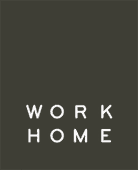Public/ private
Some home-based work is private, members of the public never visit. Journalists and illustrators often fall into this category, as interactions with clients and suppliers can be carried out over the internet as part of a global market. This has social and spatial consequences. Such home-based workers do not have to worry about maintaining their professional identity to the outside world either in terms of their appearance or their working environment. The work speaks for itself.
Other forms of home-based work involve constant interactions with members of the public, either as passing trade or on an appointment basis. Workhomes need to be designed with these distinctions in mind. One of the problems with the current situation in the UK is that because the vast majority of home-based workers are operating 'under the radar', they have to make do in less-than-optimum conditions.
One graphic designer had built an attic studio extension above her two-storey terraced house. She loved the studio, which was a crisp modern professional space, fully glazed with a small south facing terrace. She felt completely comfortable with her clients once they were in her studio. However the journey there was problematic. She felt uncomfortable meeting them at what was clearly a domestic front door, and leading them up through her house, past her most private spaces. Having visiting members of the public also caused probelms for her teenage children, who were not allowed to put posters or graffiti on their bedroom doors because their mother wanted to maintain a 'professional' feel to the workhome.
Where members of the public enter the workhome on a regular basis as passing trade, home-based workers tend to prefer to maintain a strict separation between the dwelling and workplace elements of the workhome. One publican reported reacting violently if any customers absent-mindedly went through the door that went up to their flat above.
This relationship between public and private is one of the most critical in the design of the workhome. As well as the issues above, a further issue that needs to be borne in mind is the potential for social isolation for many home-based workers. One photographer, who spent long hours processing images on the computer, said how important it was that her neighbours passed by the window of her workspace with a cheery word or a wave. An illustrator, on the other hand, reported that she could work for five days and nights without getting dressed or seeing anyone when she had a big deadline to meet.






